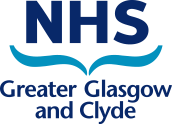Management of Type 2 Diabetes – What’s New?
Summary
- Sodium-glucose co-transporter 2 (SGLT2) inhibitors and glucagon-like peptide-1 (GLP-1) receptor agonists benefits in cardiovascular and renal outcomes
- Canagliflozin and Diabetic Kidney Disease (DKD) licence extension
- Semaglutide, the first oral GLP-1 receptor agonist
Background
There have been significant developments in the evidence base within drug classes used for the management of type 2 diabetes. These developments are summarised below, with cardiovascular benefit already reflected in the existing NHSGGC management of type 2 diabetes clinical guidelines. The increasing evidence of cardiorenal protection will inform an update to the guideline in early 2021.
SGLT2 inhibitors and GLP-1 receptor agonists and cardiorenal risk
There is increasing evidence of benefit of SGLT2 inhibitors and GLP-1 receptor agonists relating to improvements in cardiovascular, renal outcomes and heart failure.
In addition to standard first line treatment, patients with type 2 diabetes and:
- Prevalent cardiovascular disease (CVD) or those at high risk of CVD should be considered for the inclusion of a GLP-1 receptor agonist (liraglutide, semaglutide or dulaglutide) and/or an SGLT2 inhibitor (empagliflozin, canagliflozin or dapagliflozin) with proven cardiovascular benefit.
- Heart failure, particularly with reduced ejection fraction, may benefit from treatment with dapagliflozin, an SGLT2 inhibitor, with proven evidence of reducing cardiovascular death and heart failure hospitilisation.
Importantly if people are achieving their glycaemic targets, co-existing anti-hyperglycaemic agents should be reviewed on initiation to avoid the risk of hypoglycaemia.
- Chronic kidney disease (CKD) should be considered for treatment with an SGLT2 inhibitor with evidence of benefit in CKD (see below). If an SGLT2 inhibitor is inappropriate or not tolerated, a GLP-1 receptor agonist may be considered. Refer to individual Summary of Product Characteristics (SPCs) on the eMC for dosing in renal impairment, including when to initiate and stop treatment.
Note: The use of all these treatment options should remain within the current NHSGGC Formulary restriction on use for the individual agents.
Canagliflozin and Diabetic Kidney Disease (DKD) licence extension
Following renal outcome data from the CREDENCE study, canagliflozin can now be prescribed more widely in patients with type 2 diabetes and CKD.
Canagliflozin should be considered for the treatment of DKD in addition to standard care with ACE inhibitors or angiotensin-II receptor antagonists. If patients have DKD with macroalbuminuria (urinary albumin to creatinine ratio (ACR) >30mg/mmol) and CrCL > 30mL/min, canagliflozin is indicated and can be continued until renal replacement therapy. In this scenario, canagliflozin has been shown to reduce the risk of significant renal (development of end-stage renal failure (ESRF)) and cardiovascular outcomes (cardiovascular death and heart failure hospitalisation). The improvement in renal outcomes is independent of the reduction in HbA1c.
Because the glycaemic lowering efficacy of canagliflozin is reduced in patients with moderate renal impairment and likely absent in severe renal impairment, if further glycaemic control is needed, the addition of other anti-hyperglycaemic agents should be considered. Please note, canagliflozin should not be initiated in patients with CrCl < 30mL/min. Refer to table 1 below for canagliflozin dose adjustments and the SPC for full dosing advice.
(if viewing table on mobile device, switch to landscape)
Table 1: Canagliflozin dose adjustment recommendations
|
CrCl (mL/min) |
Total daily dose of canagliflozin |
|
≥ 60 |
Initiate with 100 mg. In patients tolerating 100 mg and requiring additional glycaemic control, the dose can be increased to 300 mg. |
|
45 to < 60 (a) |
Initiate with 100 mg. Continue 100 mg for patients already taking canagliflozin. |
|
30 to < 45 (a,b) |
Initiate with 100 mg. Continue 100 mg for patients already taking canagliflozin. |
|
< 30 (a,b) |
Continue 100 mg for patients already taking canagliflozin.(c) Canagliflozin should not be initiated. |
|
a If further glycaemic control is needed, the addition of other anti hyperglycaemic agents should be considered b With urinary albumin/creatinine ratio >30 mg/mmol (˃ 300 mg/g) c Continue dosing until dialysis or renal transplantation. |
Semaglutide – oral GLP-1 receptor agonist
This is the first oral preparation of this class and is included in the NHSGGC Adult Formulary. This preparation may be useful in patients where a GLP-1 receptor agonist is indicated, but the patient is not willing to consider an injectable formulation. Injectable GLP-1 receptor agonists with proven cardiovascular benefit are still considered to be the preferred option. Refer to the SPC for dosing advice.
Published: 26/02/21. Links updated 23/02/22 and again 01/08/24. Medicines Update blogs are correct at the time of publication
